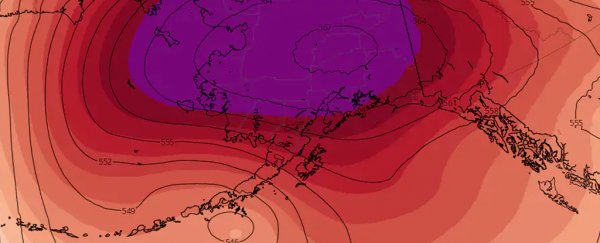Alaska just finished one of its most unusually warm Marches ever recorded. In its northern reaches, the March warmth was unprecedented.
Part of a rapid and troubling warming across the Arctic, the month concluded feverishly in the northern part of the state, with widespread temperatures 30 to 40 degrees Fahrenheit above normal.
Many areas finished March with a monthly temperature averaging 20 degrees F or more above normal.
While the warmest readings compared to normal were in the north, there was no measurable snow in Anchorage, which had happened only once before.
Off Alaska's west coast, Bering Sea ice reached a record-low extent for the month.
March was the warmest of record over all nearly of Alaska north of the Alaska Range & Bristol Bay. Some places on the North Slope & in Northwest Arctic Borough were more than 20F (11C) above normal. Early snowmelt southern areas. #akwx #AKclimatehighlights @AlaskaWx @SNAPandACCAP pic.twitter.com/Oa9a9PMVcJ
— International Arctic Research Center (@IARC_Alaska) April 1, 2019
March was a month full of record temperatures across Alaska:
- Juneau, in the southeast, saw an astounding 10 daily record highs. The city closed the month of March with seven days in row of record highs, from the 25th through the 31st. The 59-degree F record high there on March 31 was the second-warmest reading on record for the month.
- Utqiaġvik (formerly Barrow), in the northernmost tip of the United States, the thermometer rose above freezing for the third time on record in March, when it hit 33 on March 30. It ended up the warmest March on record there by more than six degrees F.
- Fairbanks notched its warmest March, with an average temperature more than 15 degrees F above normal.
- Kotzebue, in the northeast, logged its highest March temperature ever recorded, according to Alaska climatologist Rick Thoman. The high was 41 degrees F, besting a previous March record of 39 in 1973.
- Deadhorse, on the coast in northeast Alaska, just went through a week-long stretch of temperatures more than 30 degrees F above normal. On Saturday, it was 40 degrees F above normal, a monthly record for that location, per Thoman.
Deadhorse posted one of the most remarkable records for the month. Its March temperature was about 25 degrees F above normal, which is the biggest temperature departure ever recorded during March in the United States.
That anomaly surpassed the Circle Hot Springs, Alaska, record of 20.9 degrees F above normal set in 1965. Deadhorse was just one of many Alaska locations that recorded March temperatures at least 20 degrees F above normal.
While the atypically mild conditions were centered in the northern part of Alaska throughout March, as they have tended to do in recent history, just about the entire state finished much warmer than normal.
 Unusually strong upper-level high pressure was centered over Alaska during the final weekend of March. (Tropical Tidbits)
Unusually strong upper-level high pressure was centered over Alaska during the final weekend of March. (Tropical Tidbits)
Coastal areas of southern Alaska saw temperatures closest to normal, and those locations were still about five to 10 degrees above normal on average.
Anchorage, which was snowless in March and hasn't seen any since February 21, may have seen its earliest final accumulating snow on record by several weeks, according to climatologist Brian Brettschneider.
In southeast Alaska, temperatures were close to normal, but that region remains in the grip of a long-lasting drought that has worsened somewhat in recent weeks.
Sea ice in the Bering Sea set a new record low for March (2019) pic.twitter.com/xZSRKOlXRc
— Zack Labe (@ZLabe) April 2, 2019
Much of the region has been locked between low pressure to its west and high pressure to its east, conditions remained extraordinarily favorable to keep the Bering Sea full of open water. Storminess was frequent in that region and into western Alaska.
In the end, March ended up setting a record for lack of ice on the Bering Sea. This new low-ice record comes on the heels of a startling 2018, which witnessed a massive drop-off in ice levels, compared with the past.
This year seems to show that the extraordinary readings of 2017 are not an anomaly in this region of a rapidly changing climate.
"There is no more vivid a display of how quickly our climate is changing than what's happening right now in the Arctic," meteorologist Jeff Berardelli tweeted, in a reflection on the many stories of this abnormal March in Alaska.
"It's a loud canary singing in a coal mine," he concluded.
2019 © The Washington Post
This article was originally published by The Washington Post.
